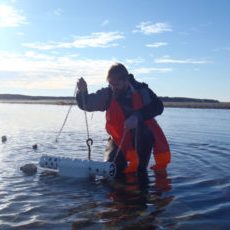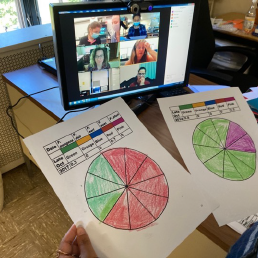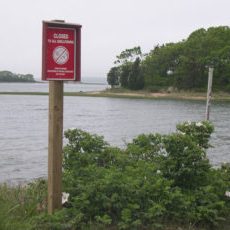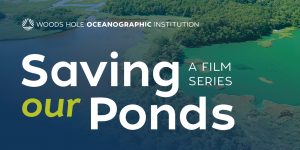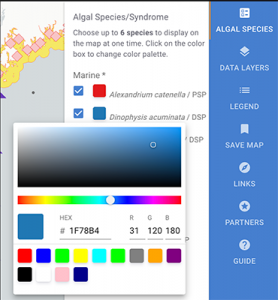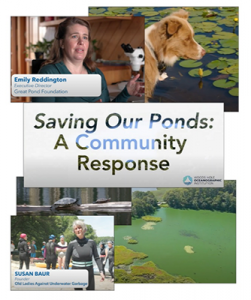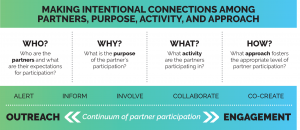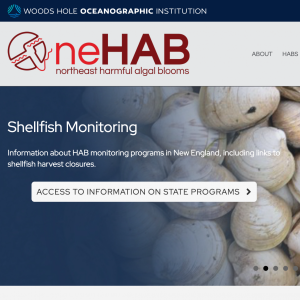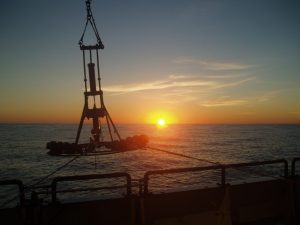Community Engagement Core
Project Lead: Mindy Richlen (WHOI)
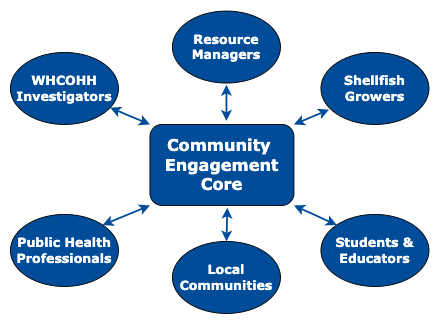
CEC Communication Interactions
The Community Engagement Core has the following Specific Aims:
Activities will include the establishment of networks and infrastructure to facilitate information exchange and resource sharing among stakeholders concerned with the safety of marine resources affected by HABs.
The CEC will develop classroom activities and exhibits on based on HABs and WHCOHH research, including a web-based game enabling classroom and public interaction with real-time data produced by Center research.
This aim focuses on increasing awareness of HAB-related health threats, and includes strengthening communication with public health professionals and organizations involved in risk analysis and communication.
Products & Resources:
 Saving our Ponds
Saving our Ponds
The beautiful ponds and waterways of Cape Cod and the Islands are beloved by residents and visitors alike, offering serene natural beauty and recreational opportunities, while providing ecologically important habitats that support diverse wildlife and plant communities. However, these the water bodies are increasingly under threat from toxic algae blooms, posing significant risks to the environment, wildlife, and human health. The Woods Hole Center for Oceans and Human Health at the Woods Hole Oceanographic Institution and Circuit Films, in collaboration with many community partners, created an outreach film series entitled “Saving Our Ponds”. The six-video series explores the recent increase and impacts of these blooms, discusses how individuals can protect themselves and their pets, and highlights the importance of preserving and restoring water quality. In addition to discussing the challenges posted by these blooms, the films highlight community-driven initiatives and emerging technologies and approaches for addressing wastewater management challenges. The film series also seeks to inspire and motivate viewers to actively engage in local conservation efforts and provide information about ways they can get involved, and help foster a sense of responsibility and ownership for these ecosystems.
The “Saving Our Ponds” film series is available for viewing on WHOI’s YouTube channel: https://www.youtube.com/playlist?list=PL1CGd4Scv4GJ3k-s7UPgk-3mKIaAIEeNX
CyanoHAB
Toxic cyanobacteria blooms, also known as CyanoHABs, pose significant threats to water quality, public health, and aquatic ecosystems. These blooms can produce dangerous toxins that impact drinking water, recreational activities, and the health of wildlife and pets.
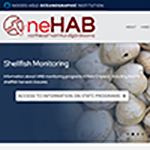 Northeast HAB Webpage
Northeast HAB Webpage
The Northeast HAB website was created as a regional resource that provides background information as well as access to bloom monitoring data and commentary, forecasting model products, and data collected by HAB sensors deployed throughout the region.
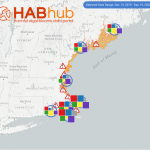 WHOI HABhub
WHOI HABhub
The WHOI HABhub is an open source data data portal for region-scale integration and real time sharing of multiple types of HAB surveillance data.
 The Harmful Algae Webpage
The Harmful Algae Webpage
A comprehensive resource for information about harmful algal blooms, maintained by the U.S. National Office for Harmful Algal Blooms at WHOI.
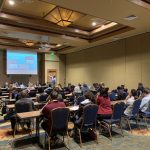 Communicating HAB Science
Communicating HAB Science
This 2019 workshop was open to HAB researchers at all levels who were interested in learning more about communicating their research to non-scientific audiences, and featured a panel discussion by HAB scientists actively engaged in science communication. Topics included translating scientific findings for non-technical audiences, leveraging social media, and communicating with policy makers and reporters.
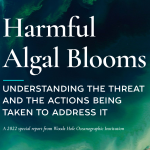 Harmful Algal Blooms: Understanding the Threat and the Actions Being Taken to Address it
Harmful Algal Blooms: Understanding the Threat and the Actions Being Taken to Address it
A 2022 Special Report from the Woods Hole Oceanographic Institution.
